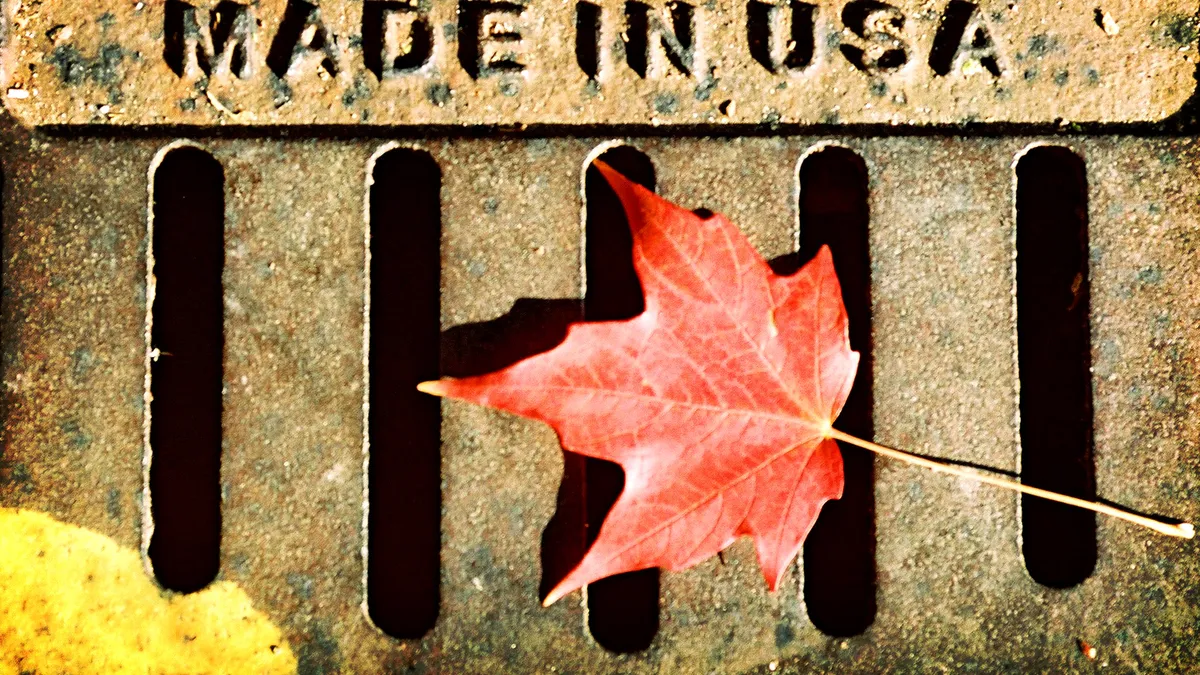Made in America: Has a nice ring to it, doesn’t it? Banking on consumers' patriotism and fondness for the flag, retailers and manufactures are focusing again on this phrase to drive sales.
Apple, Wal-Mart and GE have announced that they will begin returning some assembly production back to the United States, and President Obama has said he wants “Made in America” to be a key mantra in manufacturing. The concept of “onshoring” has become a PR-friendly trend in manufacturing and politics alike.
But what does it take to be truly “Made in America?” While it’s a hard ideal to achieve for larger retailers, smaller U.S. companies are finding success in establishing American-exclusive operations.
Here's a look at how some retailers are trying to build their "Made in America" appeal:
The American (Apparel) appeal
As one of the largest companies utilizing this phrase, any shopper visiting an American Apparel store would be hard pressed to forget that the tight-fitted, neon wares displayed are proudly made in the USA. There’s the name, for one, and also multiple signs attached to clothing racks pronouncing their origins.
According to its website, American Apparel’s factory is the largest sewing factory in North America, employing garment workers that are paid up to 50 times more than laborers in Bangladesh. Following the now-infamous collapse of the Rana Plaza garment building complex in Bangladesh last year, the latter piece of information not only appeals to the patriot inside of many consumers, but also the humanitarian.
But financial problems (as well as a slew of PR messes) seem to haunt the retailer. In February American Apparel hired an outside law firm to help with restructuring, and in April the company sold half of its shares to Zurich-based investment firm FiveT.
Shinola and Cinda b's strategies
When Shinola opened its Detroit watch factory last year, it became the first American watch manufacturer since 2003, when Hamilton moved operations to Switzerland. The luxury accessory retailer—also selling U.S.-made leather goods, journals, and bikes—sold out its first batch of 2,500 watches in eight days, and recently announced the opening of a second retail store in Detroit this summer. Shinola expects to produce up to 500,000 watches annually by next year.
Accessory retailer Cinda b keeps operations close to home, housing both its factory and offices at its Fort Wayne, ID, headquarters. Through smart, cost-cutting research and lean manufacturing, Cinda b has grown to a multi-million dollar company since its start in 2004, with sales rising an average of 53% over the past two years.
Stateside advantage
National pride may not be the solitary factor keeping these retailers stateside, and successful. According to CNBC, the cost of exporting production overseas—including anything from greater shipping expenses to rising energy and labor costs—can be a deterrent for smaller companies to do so. With manufacturing facilities in America, companies can provide greater oversight on product quality and the quality of working conditions for its employees.
Retailers also, of course, can greatly contribute to the level of employment in locations they set up shop: American Apparel’s “Sweatshop-Free” Los Angeles factory, also its headquarters, employs 3,087 professional sewers, paid an average $11 an hour.
Shinola proudly advertises its American employees by intermixing professional shots of its staff with products on its website’s front page. With a few clicks, consumers can learn a bit more about these employees, including their names, number of years with the company, and (for all except one) American hometown.
The bottom line
But with these positives comes the cost-conscious bottom line.
While two-thirds of Americans say they check labels for a clothing item’s country of origin, a New York Times article hints that the incentive to buy exclusively American seems to fall with peoples’ budgets.
“We can’t work with the Targets and the JCPenneys of the world,” said Eric Schiffer, owner of New York-based Keff NYC in the article. “It’s not for everyone. It’s really just for the higher-end companies.” On the American-only flash-sale site Made Collection (“Where America Shops for American Made”), a New Orleans designed, stitched, and packaged bowtie runs $48. Skinny jeans from Richmond cost $185.
When Wal-Mart pledged to buy $50 billion in U.S.-made products over the next 10 years, it was quickly noted that the retailer’s size and buying power would be a major advantage when fulfilling the promise, one that most companies cannot hope to match. Companies who aren’t one of the biggest in the world, and still want to provide American-made products at a discount price, have a tough road ahead of them.
So maybe it’s not the cost associated with this “Made in America” label that needs to change. Perhaps it’s the label itself. Although the phrase is easy to comprehend for consumers, industry groups and policy makers have recently called for a re-write in the rules for labeling a product “Made in America.”
Citing the fact that some apparel products contain more than 70% of U.S. value while still being labeled foreign made, a recent NRF report urges policymakers to “adopt trade policies that recognize the importance of U.S. jobs tied to imported products.” Restructuring legislation around product origin labels can help acknowledge both the services (the majority of which could be in the U.S.), and manufacturing that goes into some retail items.
With this change, the coveted "Made in USA" label can become available to more retailers beyond Shinola and Cinda b—perhaps lowering the price tag that appears next to it.
Would you like to see more retail news like this in your inbox on a daily basis? Subscribe to our Retail Dive email newsletter! You may also want to read Retail Dive's look at Target's next moves.





















